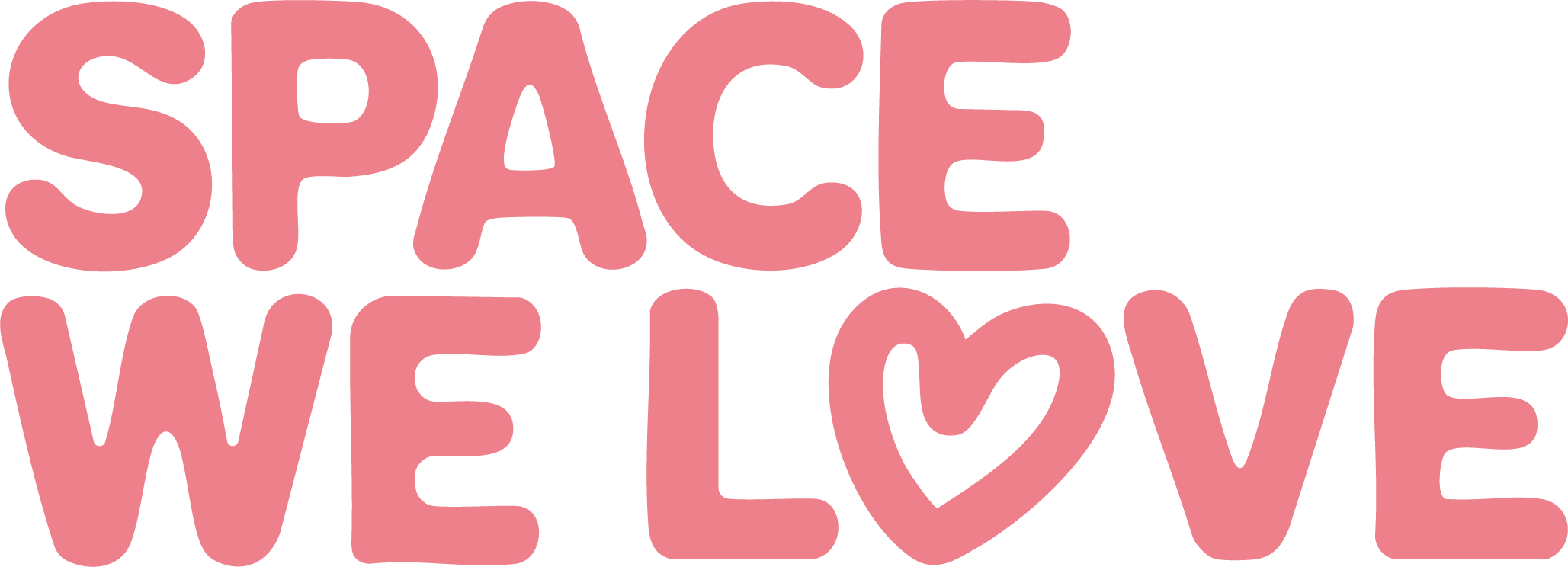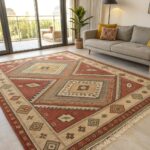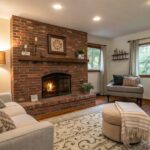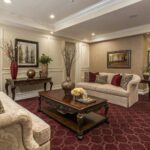Beautiful ceramics deserve thoughtful display. Whether you’ve inherited family heirlooms, discovered vintage treasures at flea markets, or invested in contemporary artisan pieces, how you showcase these items can transform both the ceramics and your living space. After years of helping clients highlight their collections, I’ve gathered these professional techniques to help you create displays that honor your pieces while enhancing your home’s aesthetic.
Understanding the Allure of Ceramic Collections
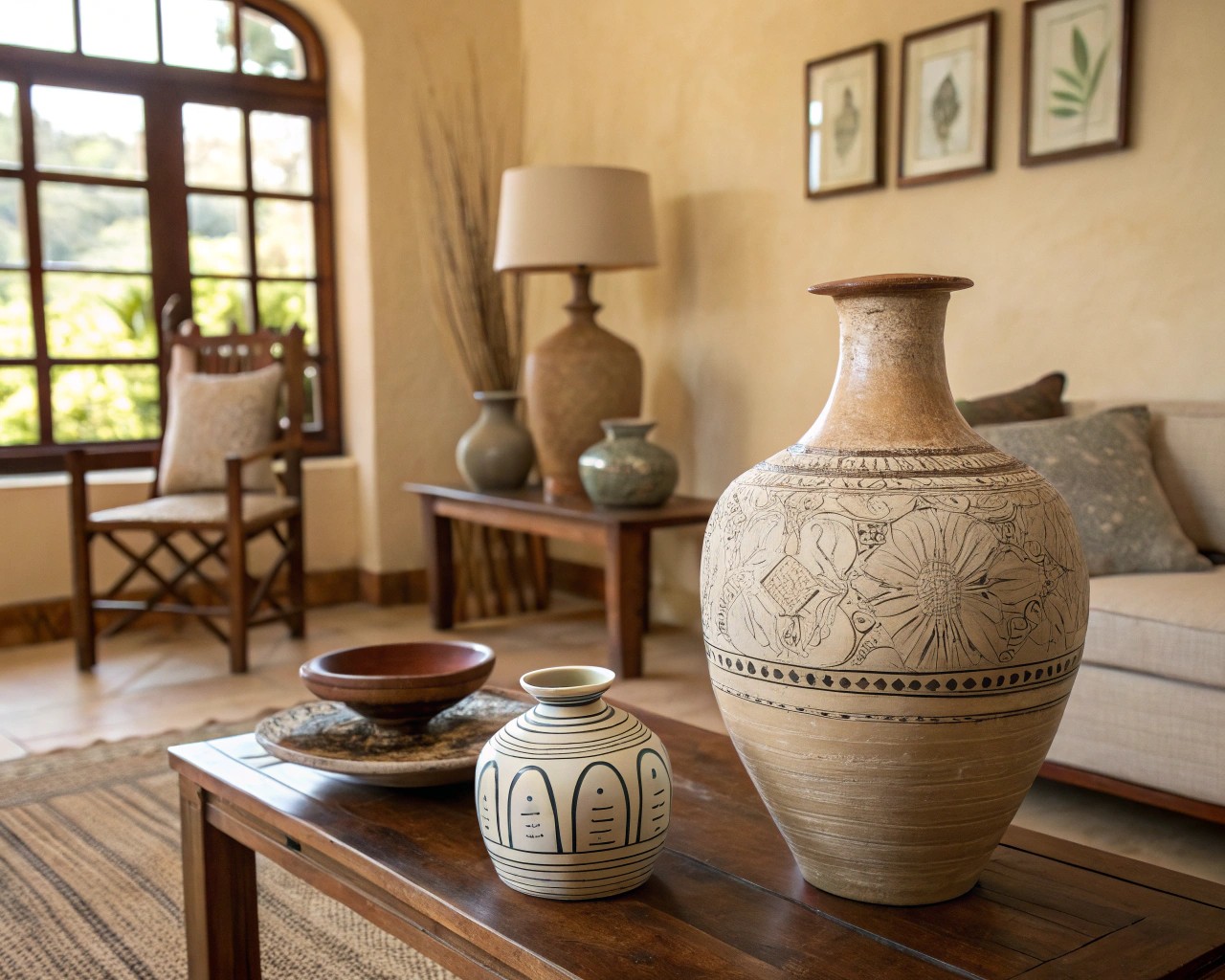
Ceramics carry an inherent depth and richness that few decorative elements can match. There’s something deeply human about these objects—each piece shaped by hands, transformed by fire, and finished with artistic intention. From rooms in Nantucket cottages to Manhattan penthouses, I’ve watched the right ceramic arrangement pull together disparate elements of a space into a cohesive, captivating whole.
Designer Cortney Bishop highlights that ceramics often serve as unsung heroes in design, contributing both visual intrigue and a sense of natural luxury. She notes their transformative power, observing that the right ceramic piece can elevate interiors ranging from charming country homes to sophisticated modern environments.
Types of Ceramics Worth Collecting

Before diving into display techniques, consider what makes for a meaningful collection:
| Ceramic Type | Visual Characteristics | Best Display Methods | Design Impact |
|---|---|---|---|
| Artisanal Pottery | Organic shapes, visible handwork | Open shelving, spotlighting | Adds authenticity and warmth |
| Fine Porcelain | Translucent, precise forms | Glass cabinets with interior lighting | Creates elegance and refinement |
| Vintage Ceramics | Period-specific styles, patina | Curated groupings, contrasting backdrops | Introduces historical narrative |
| Rustic Stoneware | Substantial, earthy textures | Kitchen displays, functional settings | Grounds spaces with organic elements |
| Decorative Tiles | Pattern-rich, geometric | Wall installations, backsplashes | Provides geometric interest and color |
| Sculptural Ceramics | Non-functional, artistic forms | Pedestal display, solo spotlighting | Creates focal points and conversation |
Building a Meaningful Collection

The most compelling ceramic collections reflect intentionality rather than accumulation. In working with clients from Boston to San Diego, we’ve found that successful collectors follow certain principles:
- Only purchase pieces that speak to you personally
- Collect items that work with your home’s aesthetic
- Support local makers or choose vintage/antique pieces when possible
- Look for organic shapes and interesting textures
- Pay attention to the “who, where, and what” of a piece’s origin
One collector eloquently described the appeal, noting the beautiful intersection of handmade processes and natural elements in ceramics. Materials sourced from the earth, like clay and sand, are skillfully transformed into enduring objects that contribute unique shapes, textures, and colors to interior spaces.
Professional Display Strategies
The Art of Grouping

Creating visually compelling arrangements involves several key techniques:
-
Use the Rule of Three: Arranging ceramics in groups of three often creates a more pleasing visual composition, especially when incorporating a taller item as a central focal point, as the eye generally finds this configuration appealing.
-
Create Color Stories: Group pottery pieces with similar styles or colors together for greater impact. For example, a collection of vintage green pottery can make a striking statement against a simple white wall.
-
Layer Tones: Complement strong wall colors by selecting ceramics in similar hues. As seen in vibrant blue rooms, matching blue and white ceramics can create a stunning, cohesive look, embracing the room’s dominant color.
-
Allow Breathing Room: Ensure adequate space between pieces, particularly in displays like vintage cupboards. This spacing allows each item’s unique beauty to be appreciated, resembling a still-life arrangement.
-
Vary Heights and Sizes: Mix pieces of different scales within a cohesive collection to create visual rhythm.
Lighting Your Collection
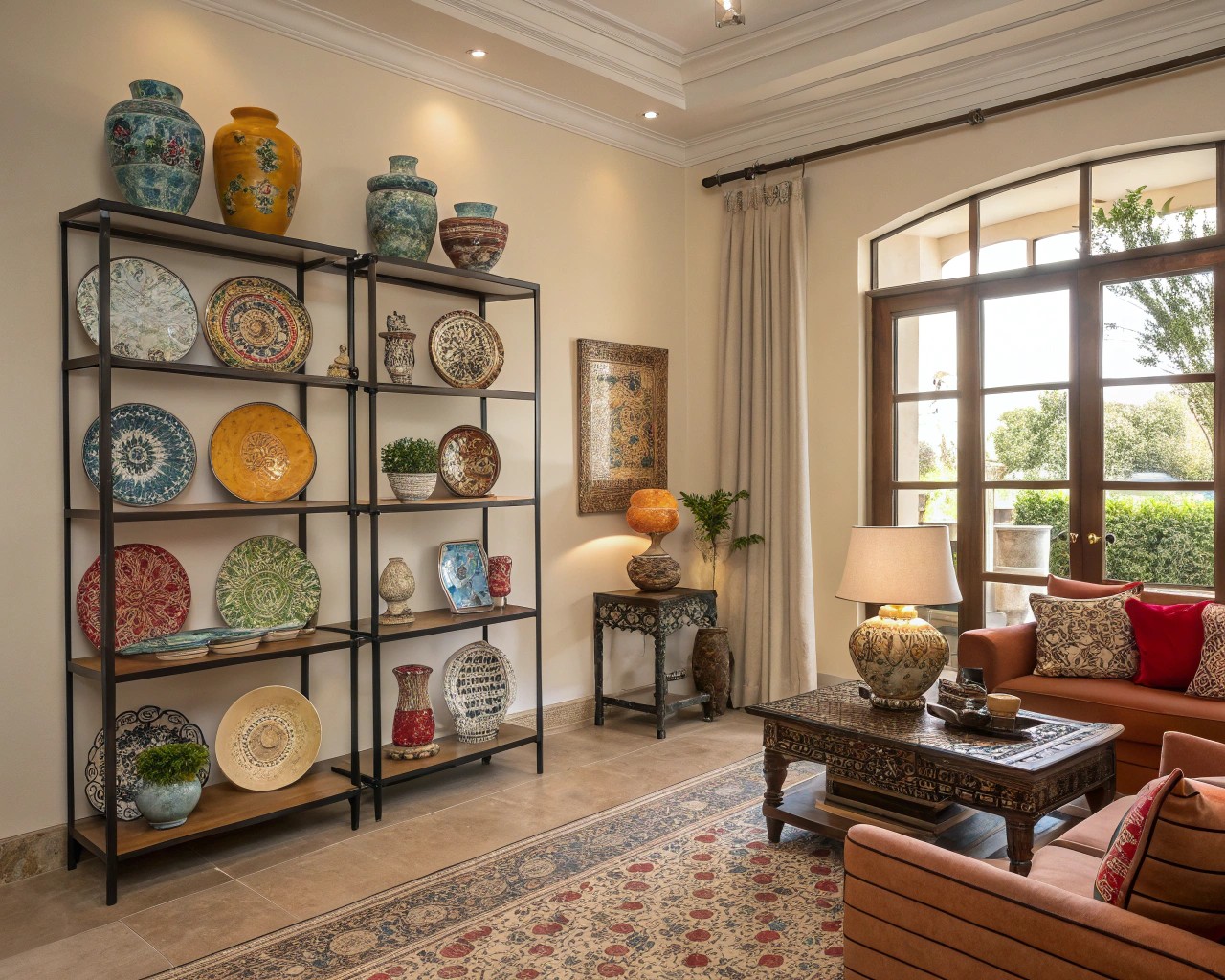
Proper lighting elevates ceramic displays from pleasant to spectacular:
- Position directional spotlights to highlight texture and form
- Use under-cabinet lighting for illuminating collections in kitchens
- Place colorful ceramics where natural daylight enhances their hues
- Consider how your collection appears under different lighting conditions throughout the day
Strategic Placement Through Your Home
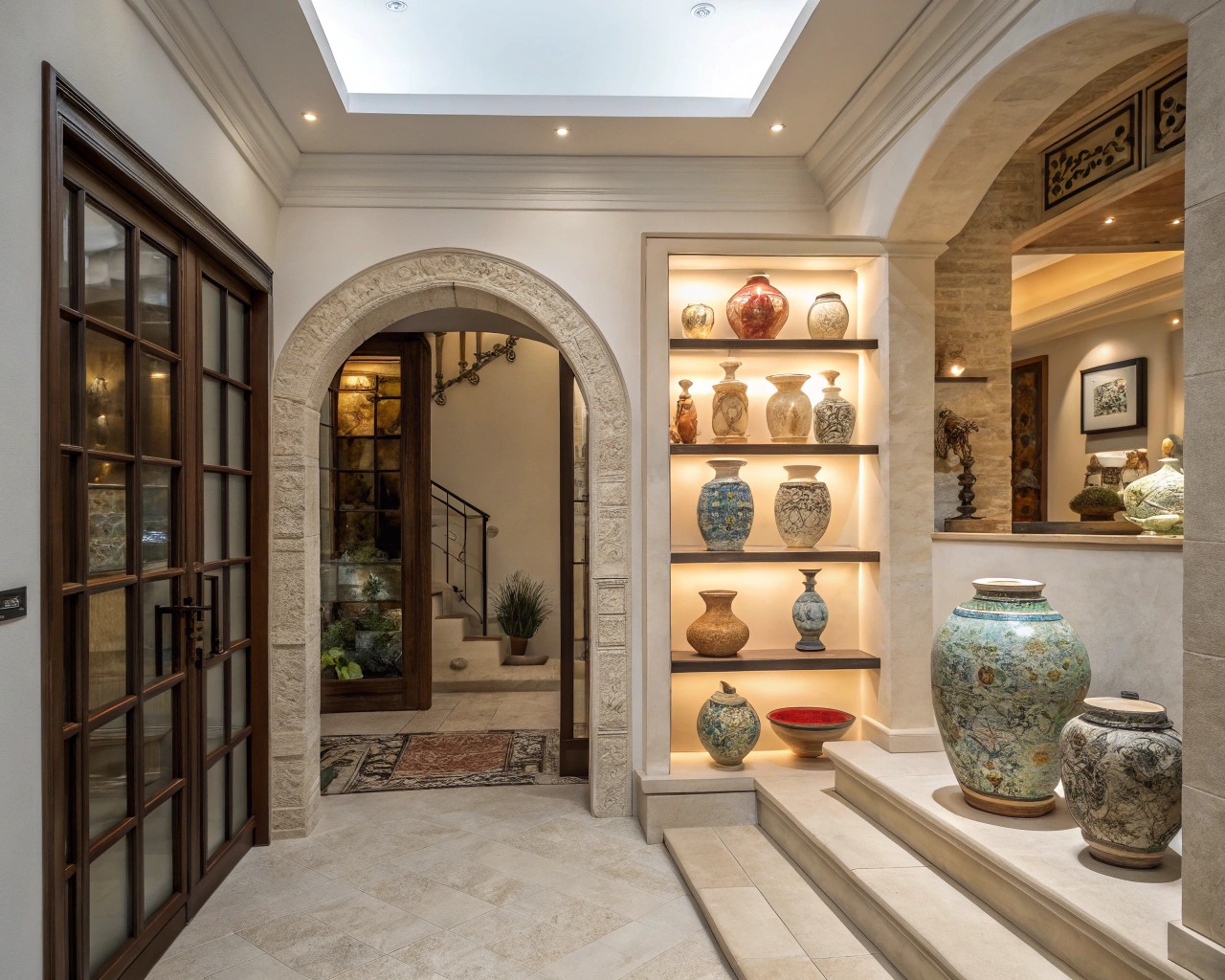
Living Spaces
The mantelpiece has traditionally been a favorite location for ceramic displays. For a contemporary update, consider placing a few select pieces asymmetrically to one side of a floating mantel, rather than centering them.
Coffee tables offer another perfect stage. A well-chosen dish and vase can create an attractive feature, especially on simple surfaces like pale wood. It’s often effective to pair complementary but contrasting items, such as a patterned dish with a plain vase, ensuring neither piece visually overwhelms the other.
Dining Areas and Kitchens
Functional ceramics shine in these spaces. Display pieces naturally while they serve their purpose—perhaps a lovely handmade pottery bowl filled with olives for guests, or an earthy vase holding flowers on the sideboard.
Open shelving provides both storage and showcase opportunities. You can evoke the appealing feeling of a curated shop display by utilizing floor-to-ceiling shelving, giving you ample space to exhibit your best vases alongside serving plates and glasses.
Awkward Architectural Spaces
Transform often-overlooked areas by building shelving around doorways or beneath stairs. This approach frames the space and creates a lovely display feature in what might otherwise be dead space. This effect can be achieved using ready-made box shelves, perhaps with minor adjustments from a handy individual, fitted around architectural elements like a door frame.
Client Transformations Through Ceramics
A New England client inherited her grandmother’s collection of blue and white pottery but struggled to incorporate these traditional pieces into her contemporary home. We created a stunning display wall using floating shelves painted the same color as the wall, making the ceramics appear to float. By arranging the collection by size rather than pattern, we transformed family heirlooms into a modern art installation.
Another client had accumulated an eclectic collection of ceramics from travels. Rather than grouping them geographically, we arranged them by color, creating a chromatic story that unified disparate pieces. “The magic happens,” as one client shared, “when you see pieces that never seemed to go together suddenly create a perfect harmony when arranged thoughtfully.”
Advanced Designer Techniques
Frame Your Collection
Even collections of neutral items like white plates, jugs, and bowls can be highlighted effectively. Make a feature of the shelving itself by painting the shelves, the wall behind them, or incorporating contrasting colored cabinet doors among open shelves, as seen in some kitchens. This strategic use of color makes the tableware visually pop.
Create Collections Within Collections
Organize subgroups by maker, period, or theme within your larger collection. This creates visual stories and focal points throughout your space.
Consider the Bottom
Experienced collectors often turn pieces over to examine their bases. For many American pottery items, the bottom can reveal significant details—the maker’s name, clay color, firing method, and other identifying characteristics. Consider incorporating stands or glass shelving that allows special maker’s marks to be visible.
Rotate Seasonally
One of the joys of ceramic collecting is the ability to refresh your displays:
- Spring: Highlight floral-themed pieces and pastel glazes
- Summer: Feature ceramics in cool blues and greens
- Fall: Showcase pieces in amber, russet, and earth tones
- Winter: Bring out metallic-glazed pieces and formal collections
Capturing Your Collection Through Photography
For those who wish to document their collections or share them online:
-
Choose the right lighting: Natural light is often preferred as it renders colors most faithfully. To maximize natural light effectively, position your piece near a window but avoid direct sunlight, which can cast harsh shadows.
-
Select appropriate backgrounds: Simple, complementary backgrounds prevent visual competition with your ceramics.
-
Highlight details and texture: Capture the unique characteristics that make each piece special.
-
Edit thoughtfully: Adjust photos to accurately represent colors and textures without over-processing.
A Designer’s Final Thoughts
Working with ceramic collections over the years has taught me that these are more than decorative objects—they’re tangible connections to human creativity and cultural expression. When displayed thoughtfully, ceramics bring a sense of soul to spaces that might otherwise feel incomplete.
In the words of designer Cortney Bishop: “What thrills me most about incorporating ceramics into my designs is their ability to create a narrative. Each ceramic piece, whether a rustic terracotta pot channeling Provencal charm or a polished ceramic lamp recalling mid-century sophistication, carries its own story.”
By implementing these designer tricks, your ceramic collection will not only enhance your interior design but will create daily moments of beauty and reflection in your living spaces. The magic lies not just in the ceramics themselves, but in how you choose to showcase them—allowing their stories to become part of your home’s unique narrative.
